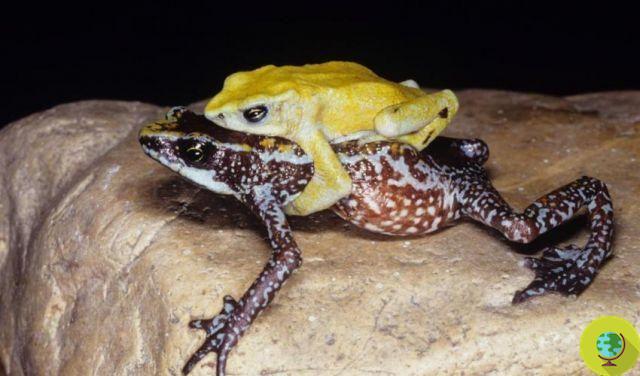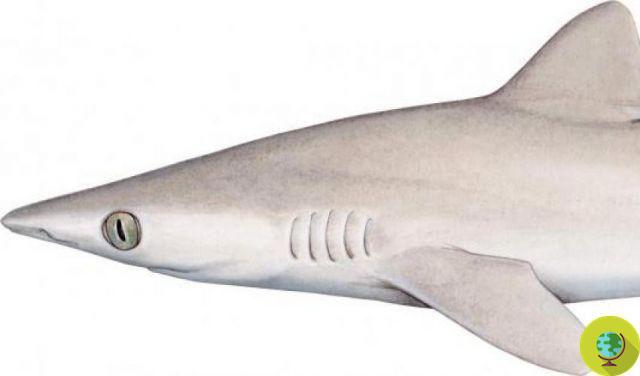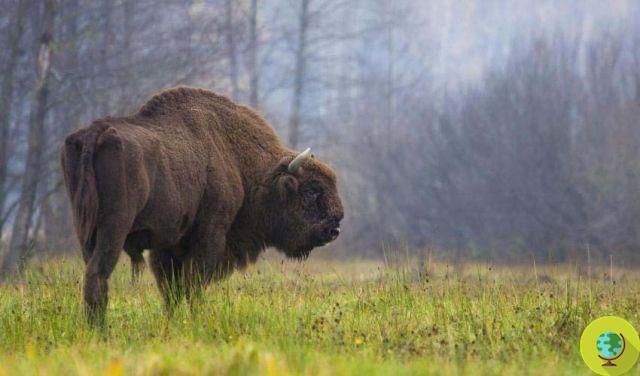31 new species are extinct and many more are at risk, including all freshwater dolphins. To say the new IUCN Red List
The International Union for Conservation of Nature (IUCN), the world authority on the state of biological diversity of species, has updated its Red List on threatened species. Unfortunately, the new list documents 31 other species that are extinct in the wild and many others that are at great risk, including all freshwater dolphins.
In the Red List of Threatened Species, issued by the IUCN, there are 35.765 species at risk of extinction (almost a third of the total species present in the global program of the Union).
These include all freshwater dolphins in the world, about one third of all oaks, 26% of all mammals, 40% of all amphibians, 14% of all birds, 33% of all all sharks and 33% of corals.
The IUCN classifies the species according to the population number in "Extinct" which describes a complete disappearance and the category "Least Concern" at the opposite end.
Of the 128918 total species assessed by the IUCN, in decreasing order of threat, there are 902 "extinct", 80 "extinct in nature", 7.762 "critically endangered", 13.285 "endangered", 14.718 "vulnerable", 7.644 "Almost threatened ”And 66.469“ Minimum concern ”.
Index
Freshwater dolphins
With the tucuxi (Sotalia fluviatilis) which passes into the "endangered" category, all freshwater dolphin species in the world are now at risk of extinction.
This small species of gray dolphin found in the Amazon river system has been severely tested by accidental mortality from fishing but also by the presence of river dams and pollution.
Eliminating the use of gillnets and reducing the number of dams in this dolphin's habitat are priorities to allow numbers to bounce back, the IUCN points out.
The new extinct species
31 new extinct species have been added to the list. These are 3 species of Central American frogs declared extinct: the Chiriqui harlequin frog, the shriveled harlequin frog and the craugostor.
Another 22 species of frogs found in Central and South America are classified as "endangered (possibly extinct)".
These frogs have been heavily affected by the deadly fungal disease called chytridiomycosis, which has put a strain on them for nearly two decades.

@iucn
Then there is a shark, the lost shark (Carcharhinus obsoletus), which was only formally described last year, and is now marked as "Critically Endangered (possibly extinct)".
It was last observed in 1934. Its natural habitat is the South China Sea, where it has been the victim of overfishing for over a century. And, given that the species is unlikely to have been able to persist under this severe pressure, the lost shark may already be extinct.

@iucn
The Philippines, and precisely Lake Lanao, loses 17 freshwater fish, of which 15 are "extinct" and 2 "critically endangered (possibly extinct)". Extinctions in this lake have been caused by the introduction of non-native predatory species and overfishing.
Unfortunately, extinctions do not concern only animals but also plants are affected by the problem.
Almost a third of oaks, for example, are at risk of extinction. Nine Asian oaks enter the IUCN Red List already critically endangered (possibly extinct or possibly extinct in the wild). The highest number of threatened species is found in China and Mexico, followed by Vietnam, the United States and Malaysia.
These have particularly suffered from deforestation but also invasive species, parasites and climate change.
BREAKING NEWS: European bison recovering, 31 species declared Extinct – @IUCNRedList https://t.co/X2zfKqtoiR pic.twitter.com/UU9ZqIH4vR
— IUCN (@IUCN) December 10, 2020
The good news
Fortunately, the list also highlights some good news. Signs of recovery arrive, for example, on the front of the European bison (Bison bonasus), which has gone from 'vulnerable' to 'near threatened' thanks to the species' numerous conservation efforts.

@iucn
Source: IUCN
Read also:
- A third of plant and animal species could become extinct in the next 50 years. I study
- At risk of extinction as many as 600 species of animals more than expected. I study
- Over 26 thousand species at risk of extinction: the IUCN red list updated


























